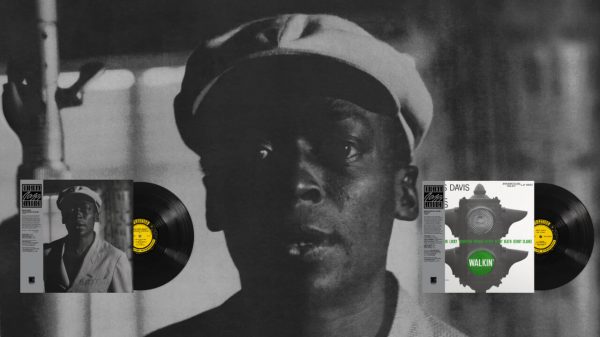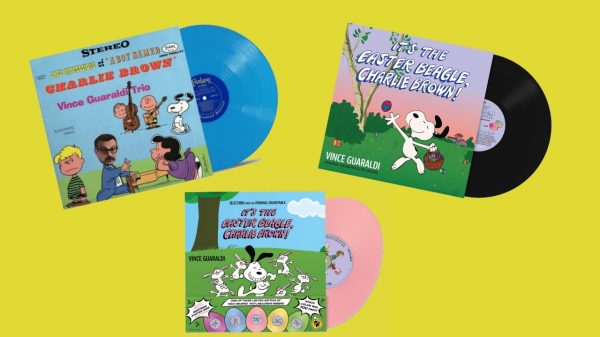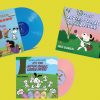In the mid ‘90s, I lived in Sapporo, the biggest city on Japan’s northern main island, Hokkaido. I was an ESL teacher working for one of Japan’s biggest English school chains, and on Wednesday evenings a group of teachers would gather downtown at a bar called Miss Jamaica for jazz night. I didn’t know anything about jazz, but I loved Wednesdays and the experience of listening to it performed live.
I didn’t realise it then, but one of the reasons I probably loved Wednesdays was that the Miss Jamaica house pianist could (and can now more than ever) be considered Japanese jazz royalty; this is where Ryo Fukui (of Scenery fame) gigged for several years before he and his wife opened their own club, Slowboat, just a few blocks away. Oblivious to this, I just liked the music and the vibe. Not enough to start buying jazz albums, but enough that the memory and some curiosity endured.

Fast forward a few years. I was stationed for a couple of months in Niigata on the Japan Sea coast of Honshu. I didn’t really know anyone there, and so spent a lot of time on my own. I travelled with a mini-component stereo system, and killed time on weekends CD shopping, and weekday evenings at “home” listening to music. One day while in HMV, I had a sudden urge to listen to some jazz and headed over to that section of the store.
Clueless about where to start, I asked one of the shop assistants for some suggestions. Her face lit up, and she excitedly took me over to a wall of CDs with a big “Price Down Jazz Festa” sign. Awesome! A sale! More CDs than I could shake a stick at, and all priced reasonably at 980 JPY (about $10 at the time).

The sales assistant twigged on pretty quickly that I was completely lost, and she looked at me very seriously and said, “If you’re new to jazz, you must start with Miles Davis.” She pointed out three discs and insisted that I start with them. Swayed by her conviction, I walked out with Kind of Blue (best-selling jazz album of all time at around 5 million copies and counting) and two Prestige compilations of early/mid ‘50s recordings, Bluing and Jazz Showcase.

Over the next week, Kind Of Blue got played every night, often more than once. The two compilations alternated back and forth, night to night. The sales assistant was right; Miles was a great place to start. Showcase and Bluing were “melody-focused” and seemed familiar even on first listen; they were what I imagined jazz to be. Kind Of Blue was more modern, less structured, setting a mood more than focusing on melody. What they had in common though was Miles’ clean almost gravitational playing.
Listening to Miles reminded me of the famous Einstein quote: “If you can’t explain it simply, you don’t understand it well enough.” His trumpet lines were simple. He was in control. There weren’t a lot of pyrotechnics or flourishes. He seemed to understand what he wanted each number to be and do, and the focus always was on beauty and tone. It didn’t matter what was happening around him with the other players; his trumpet was central and everything rotated around him. His playing and music were a gift on first listen, and continue to reward hundreds of repeats later.

The next weekend, I added Jazz Showcase compilations of Sonny Rollins, John Coltrane and Bill Evans. The following weekend, Saxophone Colossus, Blue Train and Moon Beams. And my collection exploded from there. Zero-to-50 (albums) in about 3 months – not hard to do at 980 yen a pop!
It’s at this point that you may be wondering how in 1998, with no Wikipedia, no streaming, no Amazon, and no jazz-loving friends, I found my way in and figured out what I would like and buy. What I realized pretty early on, through CD booklet liner notes, recording information and player line-ups, was two things. First, that in the ‘50s and ‘60s all (or most) roads led through Hackensack (’52-’59) and Englewood Cliffs (’59 onwards), New Jersey and the recording studios of Rudy Van Gelder.

Second, that with a few exceptions, there were no set “bands” or “groups” to speak of; jazz musicians would gather at Rudy’s studios in ever-changing combinations under a particular “session leader,” and recordings would be made under that musician’s name. Sometimes a session had a planned setlist of standards (popular numbers that the musicians could improvise on) and new compositions, and other times the players would just jam and see what happened.
Thankfully, session information was meticulously noted at the time of recording, and included in album notes, so it wasn’t hard to figure out which performers liked to play together (Grant Green liked to work with Ike Quebec, Sonny Clark and Jimmy Smith), and who not only performed but also composed for some of the greats like Duke Jordan, Duke Pearson, and Wayne Shorter.

I started following threads, figuring out which supporting musicians I liked on the recordings I had, getting a few albums where they headlined, then finding new side players to explore. Hence the progression from those first three CDs to Rollins, Evans and Coltrane.
From my Miles Davis compilations, I zeroed in on his first “great quintet” with John Coltrane, Red Garland, Paul Chambers and Philly Joe Jones. The five albums they made together (Miles, Relaxin’, Steamin’, Workin’ and Cookin’), the result of three marathon recording sessions in 1955 and 1956, were soon added and became fast favorites.

Coltrane led me to McCoy Tyner, Garland to Donald Byrd and Coleman Hawkins. Kind Of Blue introduced me to Cannonball Adderley and Wynton Kelly. Those first two compilations aroused curiosity in Milt Jackson and Horace Silver. And on it went, and became my methodology forever.

To be honest, I envy the jazz newbie of today. Admittedly, my discovery process was assisted with some amazing books about the great recordings and history of jazz (the Penguin Guide to Jazz and Richard Cook’s Blue Note Records are good starting points). I’d have loved though to be able to fire up Tidal, Qobuz or YouTube and try before I bought (yes, there were some recordings purchased that didn’t wow me), jump on Wikipedia to instantly learn about artists and records, and learn from folks on Facebook music groups, Instagram and websites like ecoustics.

If you’re just getting into jazz, I hope I’ve been able to give some pointers here that will help you find your way. There’s lots to explore, and the journey is infinitely rewarding. New fans and long-time afficionados, drop by my Instagram at @audioloveyyc to share war stories and recommendations. And remember, if you’re stuck for where to begin on the journey, or just what to play next, it can’t hurt to start with Miles.
Where to buy: Miles Davis Albums on Amazon














































Travis
February 15, 2021 at 5:49 pm
Thank you, Mr. Pye. I’m sending your article to Rita. She has been working her way through jazz piano chord progressions while learning the song Pure Imagination from Charlie & the Chocolate Factory, starring Gene Wilder.
Mr. Davis will be delightfully slipping out our speakers soon. I’m confident she will find your article as valuable as I did, if not more so.
Eric Pye
February 22, 2021 at 11:45 pm
That’s awesome Travis. Mr. Davis is awfully good for winding down from an MBA study session, I imagine!
Al Scott
January 3, 2025 at 7:01 am
Interesting read and introduction into the world of jazz. Sounds incredible being there in the 90s for sure!